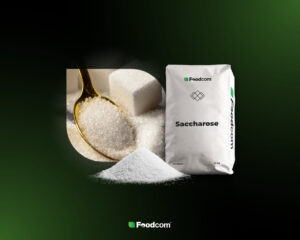- Extreme weather events like El Niño and droughts have caused significant fluctuations in global sugar production and prices.
- Technological innovations, including genetic modification and automation, have improved production efficiency and sustainability.
- Political decisions, such as India’s export restrictions and the EU’s import policies, have significantly influenced global sugar supply and market dynamics.
Faced with unpredictable challenges and new opportunities, the global sugar market experienced dynamic changes in the first half of 2024. This report provides an in-depth analysis of these changes, with a focus on significant fluctuations in production, consumption, and dynamic price changes. Events such as extreme weather events, technological innovations, and political changes have had a direct impact on global supply chains and consumer trends. We will analyze how these key factors are shaping the current and future sugar market.
Market dynamics
The year 2024 brought unique challenges to the global sugar market that the industry had to face. Volatility in sugar prices, caused mainly by weather phenomena such as El Niño, affected production in South America, increasing it, while droughts in Thailand caused significant declines. These fluctuations have had a direct impact on global sugar prices.
Trade regulations, including export restrictions imposed by India, have intensified problems with global sugar availability, showing how policy decisions can perturb the balance between local demand and international trade.
The response to these challenges has been technological innovation, including genetic modification of sugarcane, which has not only made the plant more resilient to extreme conditions, but has also contributed to sustainable production. Technological advances have also made it possible to manage resources more efficiently and minimize negative environmental impacts.
Extreme weather events, such as droughts and floods, have continued to affect the availability and price of sugar, requiring producers to adapt and seek new methods to safeguard production.
Regional analysis of the sugar market
Europe
The year 2024 brought significant challenges for sugar producers in the European Union, which they faced in the context of global and regional climate and political changes. Although sugar beet growing areas in countries such as France have been reduced, other member states have increased sowings, allowing sugar production to stabilize at 16.4 million tons. This is the result of adaptation to changing market and climatic conditions, which force producers to constantly adjust their cultivation strategies.
The increase in EU sugar consumption has been stimulated by the influx of refugees from Ukraine and by high sugar prices, which have resulted in the partial substitution of sugar by other sweeteners such as isoglucose. Sugar imports, amounting to 750,000 tons, had a significant impact on the market, contributing to oversupply in a situation of already good inventory levels, resulting in a drop in white sugar prices.
Decisions to continue duty-free sugar imports from Ukraine until June 5, 2024, when full duties will be imposed, have been met with reactions from farmers in countries such as France and Germany, who have protested what they see as unfair competition. Volatile weather conditions, such as rainy weather in northern Europe that followed periods of frost, also affected production results, reducing the sugar content of sugar beets, with the exception of a record harvest in Poland.
Brazil
Brazil, a major sugar producer, has realized a record sugarcane harvest, despite the lowest area planted in 12 years. The country’s sugar production is expected to reach 45 million tons in the 23/24 season, a significant increase from 38.7 million tons in the previous season. Increased production efficiency and favorable global prices have led to increased investment in Brazil’s sugar industry.
India and Pakistan
India, despite an increase in acreage under cultivation, struggled with weather problems that affected cane development. However, unexpected rains just before harvest improved yields and sugar content, allowing production of 35 million tons of sugar in the 23/24 season. In response to growing domestic demand, India continued to reduce sugar exports, which affected global markets
Thailand
Thailand has experienced a significant drop in production due to a lack of rainfall and farmers switching to growing other crops such as cassava. Sugar production is estimated to fall to around 9 million tonnes in the 23/24 season, a significant drop from 11 million tonnes the previous year.
Egypt
Egypt has continued to expand its sugar industry, even though lower sugar beet prices in the previous season prompted farmers to switch to other crops. Egypt is expected to produce 2.7 million tonnes of sugar in the 23/24 season. In South Africa, despite better growing conditions and projected better yields, production may only increase slightly due to the closure of two mills and the uncertain future of two more.
Trends and forecasts
In 2024, the global sugar market is seeing key changes driven by climatic, technological, consumer and political factors. The El Niño phenomenon, which began in June 2023, brought significant weather changes, including droughts in Asia and West Africa and heavy rainfall in Brazil. These weather conditions have affected production declines in countries such as India and Thailand, forcing these countries to reduce sugar exports, which in turn has affected global supplies and prices.
On the other hand, growth in global demand for sugar, especially in developing economies, continues an upward trend. This growth is also being driven by global changes in diets, where sugar remains a key ingredient in many food products. However, high sugar prices and growing health awareness are stimulating interest in alternative sweeteners.
Technological advances, including plant genetic modification and automation, are changing the sugar production landscape, increasing efficiency and reducing costs. These innovations are key to producers’ survival in a competitive global market.
The impact of trade policy, including export and import regulations, continues to shape global sugar markets. For example, decisions to restrict exports from India have a profound impact on global supplies, while European Union import policies affect domestic prices and oversupply.
Global sugar production is expected to rise to 194 million tons in 2024, with a response to growing demand. However, the future of the market will depend on a number of factors, including political stability in key producing countries, technological advances and the industry’s ability to adapt to extreme climatic conditions.
Global Reports from Foodcom S.A.
Curious about what’s next for Sugar? Discover the latest trends and insights that will shape the final months of 2023. Visit our blog as we regularly update our Global Reports. Stay up to date with Foodcom S.A.
![Sugar market review 2026 [Global Report] Sugar market review 2026 [Global Report]](https://foodcom.pl/wp-content/uploads/2024/07/global-report-sugar-market-overview-1520x760.jpeg)







